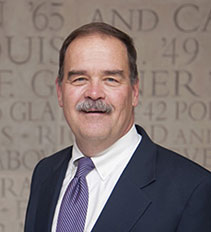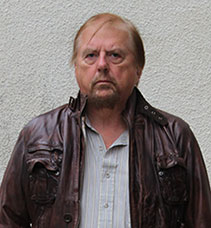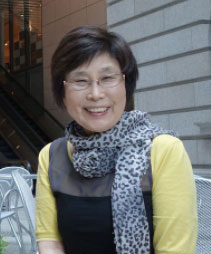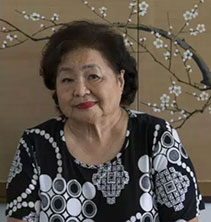Hiroko Nakamoto Lecture
The Hiroko Nakamoto Lecture on Peace and Conflict hosts prominent speakers from diverse fields who give public lectures on issues of international peace and conflict. The presentations address issues of international civility, human rights, and social responsibility. In this 2017 event, BGSU hosts an expanded roster of presentations that address increasing concerns about nuclear war. Special this year is the inclusion of two Japanese peace activists who provide first-hand accounts of their experiences surviving the Hiroshima atomic bombings.
The event is hosted by the BGSU Asian Studies Program and Peace & Conflict Studies. It is sponsored by the Center for Global Partnership of the Japan Foundation, Hiroko Nakamoto, and the BGSU College of Arts and Sciences.
Seeking Peace in the Nuclear Era: A Peace Symposium
A trio of presentations addressing nuclear war and world peace
October 16–19, 2017
Bowling Green State University
Free and open to the public

The North Korean Nuclear Challenge: How Did This Happen and What Do We Do Now?
Hiroko Nakamoto Peace Lecture
Dr. Thomas Snitch
Professor at the U.N. University in Tokyo and BGSU alumnus
Monday, Oct. 16 | 7:30 p.m. | BTSU Theatre
How Pyongyang was able to build and, now, possibly deploy a thermonuclear warhead on an intercontinental missile, and recommendations on how to address this growing threat to stability.
Don’t Panic: Threats to Peace in this Nuclear Age
Dr. Gwynne Dyer
Journalist, historian, filmmaker
Tuesday, Oct. 17 | 7:30 p.m. | BTSU 228
Threats to peace around the world with an emphasis on nuclear issues, and peace in context of trends in global politics such as populism, conflicts in the Middle East and climate change.
Looking Back, and Ahead, to Peace
Ms. Keiko Ogura
Ms. Setsuko Thurlow
Hiroshima survivors and peace activists
Two hibakusha—survivors of the 1945 atomic bombings—share recollections, personal stories and perspectives on both the Hiroshima bombing and threats to peace today.
Wednesday, Oct. 18 | 7:30 p.m. | BTSU Theatre
Thursday, Oct. 19 | 3:30 p.m. | Wood County Library
MEET THE SPEAKERS

Thomas Snitch (BGSU BA '75, Hon '15) joined the U.S. Department of State and the U.S. Arms Control and Disarmament Agency in 1981 and, after completing post-doctoral work in reactor physics and nuclear warhead design at Los Alamos National Labs, was named the first U.S. National Nuclear Officer for North Korea (and South Africa). He was one of the first people in the world to discover that North Korea was actively pursuing a nuclear weapons capability.
Snitch holds a Distinguished Senior Professorship at the University of Maryland’s Institute of Advanced Computer Studies, where he directs an international team working on anti-poaching and wildlife crime issues. He is also a senior professor of science at the United Nations University in Tokyo, where he serves as the U.N.’s executive officer for the Worldwide Enforcement Monitoring Systems, which oversees the global trade in endangered flora and fauna.
Snitch is also president of Little Falls Associates Inc. and chief scientist at GeoQuera, consulting firms specializing in solving complex scientific and technological challenges in Asia and Africa. Since 1990, he has worked on issues such as responding to the Tohoku earthquake in Japan and the crisis at the Fukushima nuclear plant, remediation of abandoned chemical weapons in China, the disposal of PCB wastes on U.S. military bases in the region, remote sensing policy in India, and the North Korean nuclear weapons situation. He holds a bachelor’s degree in Chinese and Asian studies from BGSU.

One of the world’s great geopolitical analysts, Gwynne Dyer has worked as a freelance journalist, columnist, filmmaker, and lecturer on international affairs for more than 35 years. His twice-weekly column on international affairs appears in more than 40 countries in a variety of newspapers. His radio and TV documentaries—on subjects that range from war to climate change to emerging global culture—have aired around the world. He has served in three navies, and holds a Ph.D. in military and Middle Eastern history from the University of London. His recent books analyze military and political issues and include Don’t Panic: ISIS, Terror, and Today’s Middle East (2015), Canada in the Great Power Game (2014), Climate Wars (revised edition 2010), The Mess They Made (2007), Future: Tense (2004), and War (2004).

Keiko Ogura was eight years old when the atomic bomb was dropped on Hiroshima. She has spent her life advocating against nuclear arms and against armed conflict. In 1984, Ogura along with other hibakusha founded the Hiroshima Interpreters for Peace (HIP), which provides free-of-charge tours in Hiroshima informing the public about the atomic bomb and connecting them to a-bomb survivors. She has given her advocacy for peace around the world to thousands of audiences.

Setsuko Thurlow was 13 and living in Hiroshima when she was devastated by the atomic bomb. Throughout her life, she has been sharing her experiences in order to sensitize people about the consequences of war and conflict and to promote civility and peace. She has spoken internationally to thousands of audiences ranging from concerned citizens, academics, and school children. She received the Nuclear Age Peace Foundation’s Distinguished Peace Leadership Award in 2015, and in 2016, Thurlow was nominated for a Nobel Peace Prize.
Updated: 06/18/2020 03:15PM
